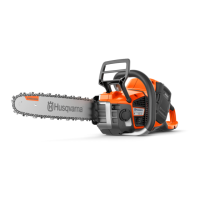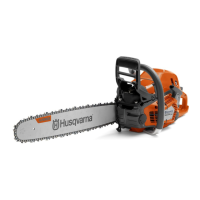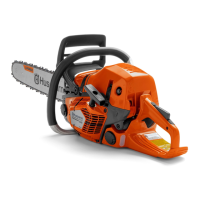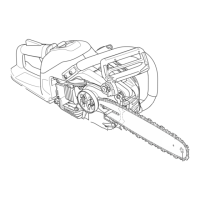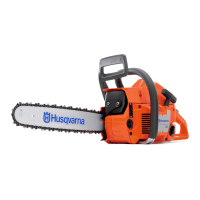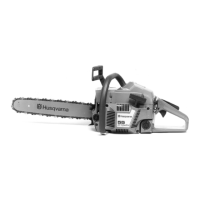Do you have a question about the Husqvarna 545 and is the answer not in the manual?
Warnings related to reducing the risk of electric shock, like unplugging the machine.
Warnings about safe use, child safety, proper maintenance, and avoiding hazards.
Visual guide and list of parts for the Husqvarna Viking Lily 555 sewing machine.
Visual guide and list of parts for the Husqvarna Viking Lily 545 sewing machine.
Step-by-step instructions for removing the sewing machine from its packaging.
Instructions for attaching and connecting the foot control to the sewing machine.
Guide on how to connect the main power cord and plug into an outlet.
Details on opening the accessory box and organizing its contents like presser feet and bobbins.
Instructions on attaching and using the extension table for a larger work area.
Explains the function and placement of spool pins for different thread spool sizes and twin needles.
Step-by-step guide on how to thread the upper thread through the sewing machine.
Instructions on how to thread the machine for sewing with a twin needle.
Details the steps for winding a bobbin, including using the vertical spool pin.
Guide on how to correctly insert the wound bobbin into the bobbin case.
Explains how to identify and achieve correct thread tension for optimal stitch quality.
How to adjust the pressure exerted by the presser foot on the fabric.
Operation of the presser foot lever for raising, lowering, and increasing lift height.
Step-by-step instructions for removing and attaching different presser feet.
Instructions for safely removing and inserting needles, including system compatibility.
Explains how and when to lower the feed teeth for specific sewing tasks.
How to set whether the needle stops up or down in the fabric.
Using the SPEED button to control the sewing speed.
How to use the STOP button to secure stitches and end sewing sequences.
Instructions for creating mirror images of stitches for various effects.
How to change the stitch width using the +/- buttons.
How to navigate menus and select functions like NORM, PROG, REP.
How to use the FIX button to tie off stitches at the beginning or end of a seam.
How to delete individual stitches or entire programmed sequences.
How to select program memories on Model 555 and 545.
Guidance on selecting the correct presser foot and thread tension for stitches.
How to select different stitch menus (Utility, Letters, etc.) on Model 555.
How to select different stitch menus (Utility, Letters) on Model 545.
How to use the 4 program memories to store up to 55 stitches/letters.
How to use the 2 program memories to store up to 25 stitches/letters.
Step-by-step guide to programming stitches and letters into memory.
How to modify stitch length, width, and mirror image during programming.
How to change or correct stitches/letters within a programmed sequence.
Details on side-to-side and end-to-end mirror image effects.
How to program stopping points within a stitch sequence.
How to view previously programmed stitches and memories.
Detailed steps for deleting specific stitches or entire programs.
How to use the darning and taper satin stitches, noting they cannot be programmed.
Describes different buttonhole styles available for Model 555 and 545.
Step-by-step process for sewing buttonholes, including size and density adjustments.
How to select buttonholes and prepare the fabric and machine.
Detailed steps for sewing the four columns of a buttonhole and using the buttonhole knife.
Instructions for sewing buttons with standard hole spacing, including mirror function.
How to sew buttons that have a shank using a clearance plate.
Explains the use of straight stitch for joining non-stretch fabrics and seams.
How to change needle positions for topstitching and edge stitching.
Steps for sewing two gathering threads and distributing the fullness evenly.
Detailed instructions for sewing a lapped zipper, including foot positioning.
Use of reinforced straight stitch for durable seams on stretch and heavy fabrics.
How to use the stretch stitch for pliable, stretchy seams.
Applications of the zigzag stitch for lace, edgings, and patches.
Step-by-step guide for attaching lace using zigzag and satin stitches.
Using the three-step zigzag for overcasting edges and mending.
Techniques for sewing and finishing seams on terry cloth.
Using the flatlock stitch for overlapped seams, decorative hems, and bands.
How to sew blind hems, including adjustments for stitch catch and fold.
Using the bridging stitch for joining fabric edges and for elastic shirring.
Using overcast and overlock stitches for seams on various fabrics.
How to use the darning stitch to repair worn fabric.
Using the taper stitch for monograms and decorative elements.
How to combine and program decorative stitches for various effects and edgings.
Instructions for marking and sewing quilt designs using the quilting stitch.
How to perform appliqué using heirloom and satin stitches.
Steps for programming and sewing pictogram designs using memory.
How to use the free arm for sewing narrow openings like trouser legs and sleeves.
Using the clearance plate for sewing thick seams like jeans hems.
How to attach belt loops using a zigzag stitch and bartacking.
Lists basic stitches like straight, zigzag, overcast, with their applications.
Lists specialty stitches like blind hem, quilting, satin, buttonholes with their uses.
Lists basic stitches for Model 545 with their applications.
Lists specialty stitches like hemstitches, quilting, satin, buttonholes for Model 545.
Instructions for replacing the sewing machine's light bulb.
Guidance on keeping the machine clean for optimal operation.
How to remove the stitch plate and clean the feed teeth and bobbin area.
How to fix issues like unattractive stitches, incorrect thread tension, and fabric puckering.
Causes and solutions for upper thread and bobbin thread breaking.
Solutions for fabric not feeding, loose stitches, or incorrect stitch selection.
What to do if the machine is sluggish, motor issues, and when to seek expert assistance.
| Engine Power | 2.5 kW |
|---|---|
| Cylinder Displacement | 50.1 cm³ |
| Sound Power Level, Guaranteed (LWA) | 116 dB(A) |
| Fuel Tank Volume | 0.52 liters |
| Oil Tank Volume | 0.27 l |
| Chain Pitch | 0.325" |
| Chain Gauge | 0.05 inch |
| Bar Length | 40-50 cm (16-20 in) |

